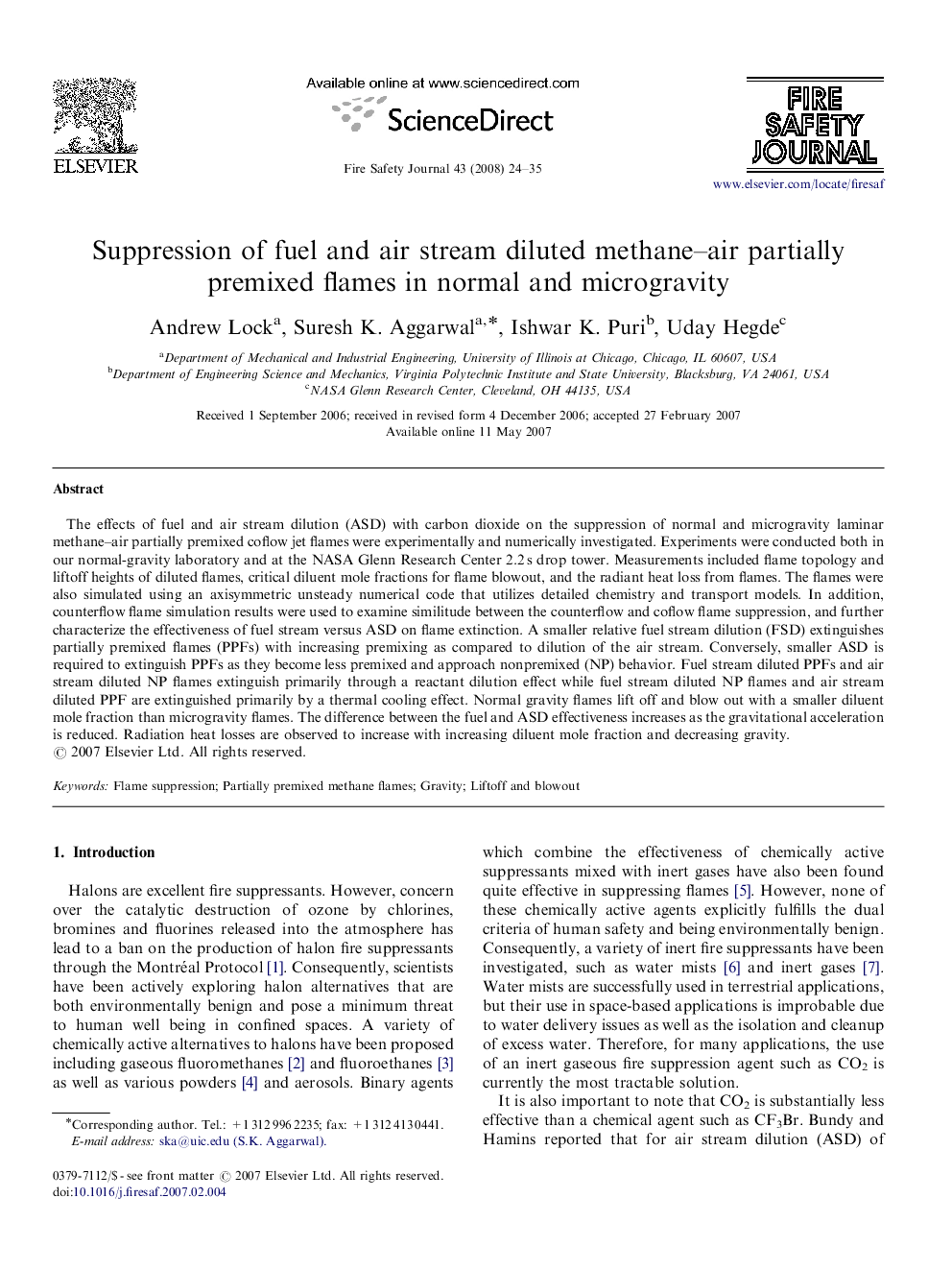| Article ID | Journal | Published Year | Pages | File Type |
|---|---|---|---|---|
| 270379 | Fire Safety Journal | 2008 | 12 Pages |
The effects of fuel and air stream dilution (ASD) with carbon dioxide on the suppression of normal and microgravity laminar methane–air partially premixed coflow jet flames were experimentally and numerically investigated. Experiments were conducted both in our normal-gravity laboratory and at the NASA Glenn Research Center 2.2 s drop tower. Measurements included flame topology and liftoff heights of diluted flames, critical diluent mole fractions for flame blowout, and the radiant heat loss from flames. The flames were also simulated using an axisymmetric unsteady numerical code that utilizes detailed chemistry and transport models. In addition, counterflow flame simulation results were used to examine similitude between the counterflow and coflow flame suppression, and further characterize the effectiveness of fuel stream versus ASD on flame extinction. A smaller relative fuel stream dilution (FSD) extinguishes partially premixed flames (PPFs) with increasing premixing as compared to dilution of the air stream. Conversely, smaller ASD is required to extinguish PPFs as they become less premixed and approach nonpremixed (NP) behavior. Fuel stream diluted PPFs and air stream diluted NP flames extinguish primarily through a reactant dilution effect while fuel stream diluted NP flames and air stream diluted PPF are extinguished primarily by a thermal cooling effect. Normal gravity flames lift off and blow out with a smaller diluent mole fraction than microgravity flames. The difference between the fuel and ASD effectiveness increases as the gravitational acceleration is reduced. Radiation heat losses are observed to increase with increasing diluent mole fraction and decreasing gravity.
